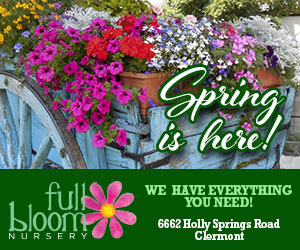VENICE, Italy (AP) — Venice has always been a place of contrasts, of breathtaking beauty and devastating fragility, where history, religion, art and nature have collided over the centuries to produce an otherworldly gem of a city. But even for a place that prides itself on its culture of unusual encounters, Pope Francis’ visit Sunday stands out.
Francis is traveling to Venice to check out the Holy See’s pavilion for this year’s Venice Biennale. It’s a first for a pope, and has given the 60th edition of the world’s longest running international art exhibit reason for another round of headlines.
The Vatican chose to stage its pavilion inside Venice’s women’s prison, and through a deal with the Italian Justice Ministry, invited inmates to work alongside the artists. The result is a multimedia exhibit “With My Eyes,” that is open to the public by reservation only and under strict security conditions.
Francis will tour the exhibit, meet with the inmates and then address Venice’s artistic community at large inside the chapel of the prison, which was once a convent for reformed prostitutes.
The Vatican exhibit has turned the convent-prison into one of the must-see attractions of this year’s Biennale, an unusual art world darling that greets visitors at the entrance with Maurizio Cattelan’s wall mural of two giant filthy feet. The work, titled “Father,” recalls Caravaggio’s dirty feet or the feet that Francis washes each year in a Holy Thursday ritual that he routinely performs on prisoners.
After that encounter, Francis heads by boat across the Giudecca Canal to Venice’s iconic Santa Maria della Salute basilica to meet with young people. Then he is driven by golf cart over a pontoon bridge laid across the Grand Canal for the occasion to Piazza San Marco, where he celebrates Mass in the shadow of the city’s spectacular Byzantine basilica.
Francis’ dizzying morning visit, which will end before lunchtime, represents an increasingly rare outing for the 87-year-old pontiff, who has been hobbled by health and mobility problems that have ruled out any foreign trips so far this year.
But it’s also unusual because it comes as Venice, sinking under rising sea levels and weighed down by the impact of overtourism, is in the opening days of an experiment to try to limit the sort of day trips that Francis is undertaking.
Venetian authorities last week launched a pilot program to charge day-trippers 5 euros ($5.35) apiece on peak travel days. The aim is to encourage them to stay longer or come at off-peak times to cut down on crowds and make the city more livable for its dwindling number of residents.
For Venice’s Catholic patriarch, Archbishop Francesco Moraglia, the new tax program is a worthwhile experiment, a potential necessary evil to try to preserve Venice as a livable city for visitors and residents alike.
“Venice has to be defended as a polis, as a city,” Moraglia said in an interview on the eve of Francis’ visit. “The city risks not being a city anymore; it risks being a cultural offering, an open-air museum.”
Moraglia said Francis’ visit was a welcome boost, especially for the women of the Giudecca prison who are participating in the exhibit as tour guides and as protagonists in some of the artworks.
“These are places of sadness, of suffering, and for these people to have someone of global importance like the pope come to Venice to see them, is a real and concrete encouragement,” he said. “And there’s a message also to the city and to civil society: that those who make a mistake must pay, but they cannot be forgotten.”
In fact, one of the exhibits in the prison is a neon sign on the inner courtyard, by the artistic collective Claire Fontaine, that reads: “Siamo con voi nella notte” (We are with you at night).
Moraglia acknowledged that Venice over the centuries has had a long, complicated, love-hate relationship with the papacy, despite its central importance to Christianity.
The relics of St. Mark — the top aide to St. Peter, the first pope — are held here in the basilica, which is one of the most important in all of Christendom. Several popes have hailed from Venice — in the past century alone three pontiffs were elected after being Venice patriarchs. Venice hosted the last conclave held outside the Vatican: the 1799-1800 vote that elected Pope Paul VII.
But for centuries before that, relations between the independent Venetian Republic and the Papal States were anything but cordial as the two sides dueled over control of the church. Popes in Rome issued interdicts against Venice that essentially excommunicated the entire territory. Venice flexed its muscles back by expelling entire religious orders, including Francis’ own Jesuits.
“It’s a history of contrasts because they were two competitors for so many centuries,” said Giovanni Maria Vian, a church historian and retired editor of the Vatican newspaper L’Osservatore Romano whose family hails from Venice. “The papacy wanted to control everything, and Venice jealously guarded its independence.”
Moraglia said that troubled history is long past and that Venice was welcoming Francis with open arms and gratitude, in keeping with its history as a bridge between cultures, even opposing ones.
“The history of Venice, the DNA of Venice — beyond the language of beauty and culture that unifies — there's this historic character that says that Venice has always been a place of encounter," he said.
___
Winfield reported from Rome. Associated Press writer Colleen Barry contributed.




















